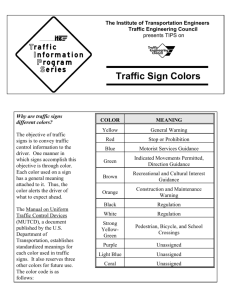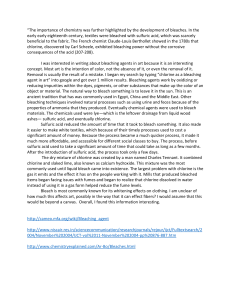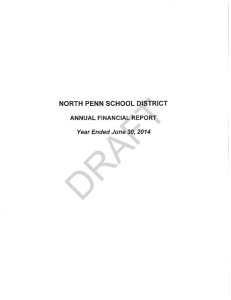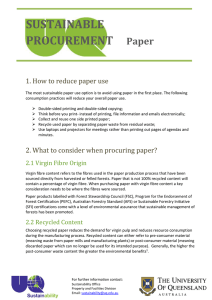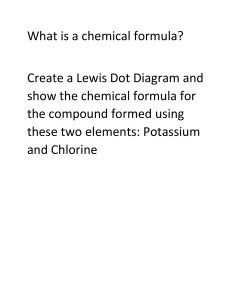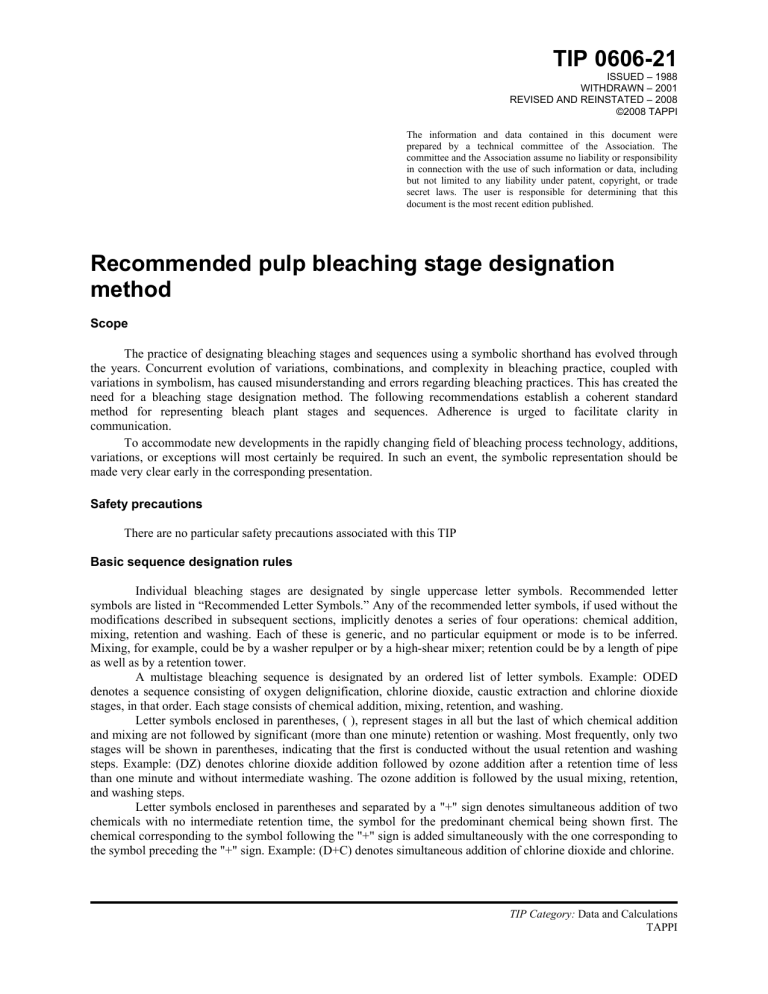
TIP 0606-21 ISSUED – 1988 WITHDRAWN – 2001 REVISED AND REINSTATED – 2008 ©2008 TAPPI The information and data contained in this document were prepared by a technical committee of the Association. The committee and the Association assume no liability or responsibility in connection with the use of such information or data, including but not limited to any liability under patent, copyright, or trade secret laws. The user is responsible for determining that this document is the most recent edition published. Recommended pulp bleaching stage designation method Scope The practice of designating bleaching stages and sequences using a symbolic shorthand has evolved through the years. Concurrent evolution of variations, combinations, and complexity in bleaching practice, coupled with variations in symbolism, has caused misunderstanding and errors regarding bleaching practices. This has created the need for a bleaching stage designation method. The following recommendations establish a coherent standard method for representing bleach plant stages and sequences. Adherence is urged to facilitate clarity in communication. To accommodate new developments in the rapidly changing field of bleaching process technology, additions, variations, or exceptions will most certainly be required. In such an event, the symbolic representation should be made very clear early in the corresponding presentation. Safety precautions There are no particular safety precautions associated with this TIP Basic sequence designation rules Individual bleaching stages are designated by single uppercase letter symbols. Recommended letter symbols are listed in “Recommended Letter Symbols.” Any of the recommended letter symbols, if used without the modifications described in subsequent sections, implicitly denotes a series of four operations: chemical addition, mixing, retention and washing. Each of these is generic, and no particular equipment or mode is to be inferred. Mixing, for example, could be by a washer repulper or by a high-shear mixer; retention could be by a length of pipe as well as by a retention tower. A multistage bleaching sequence is designated by an ordered list of letter symbols. Example: ODED denotes a sequence consisting of oxygen delignification, chlorine dioxide, caustic extraction and chlorine dioxide stages, in that order. Each stage consists of chemical addition, mixing, retention, and washing. Letter symbols enclosed in parentheses, ( ), represent stages in all but the last of which chemical addition and mixing are not followed by significant (more than one minute) retention or washing. Most frequently, only two stages will be shown in parentheses, indicating that the first is conducted without the usual retention and washing steps. Example: (DZ) denotes chlorine dioxide addition followed by ozone addition after a retention time of less than one minute and without intermediate washing. The ozone addition is followed by the usual mixing, retention, and washing steps. Letter symbols enclosed in parentheses and separated by a "+" sign denotes simultaneous addition of two chemicals with no intermediate retention time, the symbol for the predominant chemical being shown first. The chemical corresponding to the symbol following the "+" sign is added simultaneously with the one corresponding to the symbol preceding the "+" sign. Example: (D+C) denotes simultaneous addition of chlorine dioxide and chlorine. TIP Category: Data and Calculations TAPPI TIP 0606-21 Recommended pulp bleaching stage designation method/ 2 A slash ("/") occurring between stage symbols enclosed by parentheses explicitly denotes significant (more than one minute) retention in the stage denoted by the letter symbol preceding the slash. Note, however, that the stages separated by a slash are conducted with no intermediate washing, as indicated by the parentheses surrounding their letter symbols. Example: (D/E) denotes chlorine dioxide addition, mixing and retention (e.g., in a tower) followed, without washing, by a caustic extraction stage. Fig. 1. ODED sequence. Recommended letter symbols A B C D E F G H I J K L M N O P Pa Q R S T U V W X Y Z Acid Wash/Treatment Unassigned Chlorine Chlorine Dioxide Alkaline Extraction Unassigned Unassigned Hypochlorite Unassigned Unassigned Unassigned Unassigned Chlorine Monoxide or Hypochlorous Acid Unassigned Oxygen Peroxide Peracetic acid Chelating Agent Unassigned Unassigned Unassigned Unassigned Unassigned Unassigned Xylanase enzymes Dithionite (Hydrosulfite) Ozone Unassigned letters may be employed for bleaching agents not shown, but must be clearly defined early in the presentation. 3 / Recommended pulp bleaching stage designation method TIP 0606-21 Stages and sequences Using the recommended letter symbols, the bleaching sequence designation for the following example of a five-stage bleach plant consisting of oxygen, chlorine dioxide, alkaline extraction, and chlorine dioxide stages should be shown as ODED. This ODED sequence is graphically illustrated in Fig. 1. In Fig. 1 and similar graphical representations: • Mixing is represented by a box with an “x” through it. It may represent any mixing device including static mixers, dynamic mixers, washer repulpers, pumps, or any combination of mixing devices. • Retention equipment is represented by vertical rectangles. Possibilities include towers of upflow and downflow design, reactors, reactors with blow tanks, tubes or any tower-tower, tube-tower combination. • Washing or pressing is denoted by an unfilled circle. It may represent any washing device including vacuum washers, gravity washers, pressure washers, compaction baffle washers, horizontal belt washers, diffusers, or any pressing device. It should be noted that graphic symbols are introduced only for clarity of the method and are not required in presentations unless the author so desires. Numbering of stages Numbering of stages in the bleaching sequence is not required; however, in the presentation it should be clearly stated which of the two alkaline extraction, chlorine dioxide or peroxide stages (if two are present in the bleaching sequence) is being described. If desired, stages of the same type in a given sequence can be distinguished by assigning them numerical subscripts, as in D0E1D1E2D2. Note that the “0” subscript is used only for a chlorine dioxide delignification stage. Subscripts, superscripts and lower case letters Except as noted above, subscripts, superscripts, and lower case letters should not be used. Keywords Bleaching, Nomenclature, Washing Additional information Effective date of issue: July 28, 2008 Working Group Members: Peter Hart, Chairman, MeadWestvaco Corporation Tom McDonough, Institute of Paper Science and Technology, Emeritus Alan Rudie, Forest Products Laboratory Chuck Courchene, Georgia Pacific Corporation g

